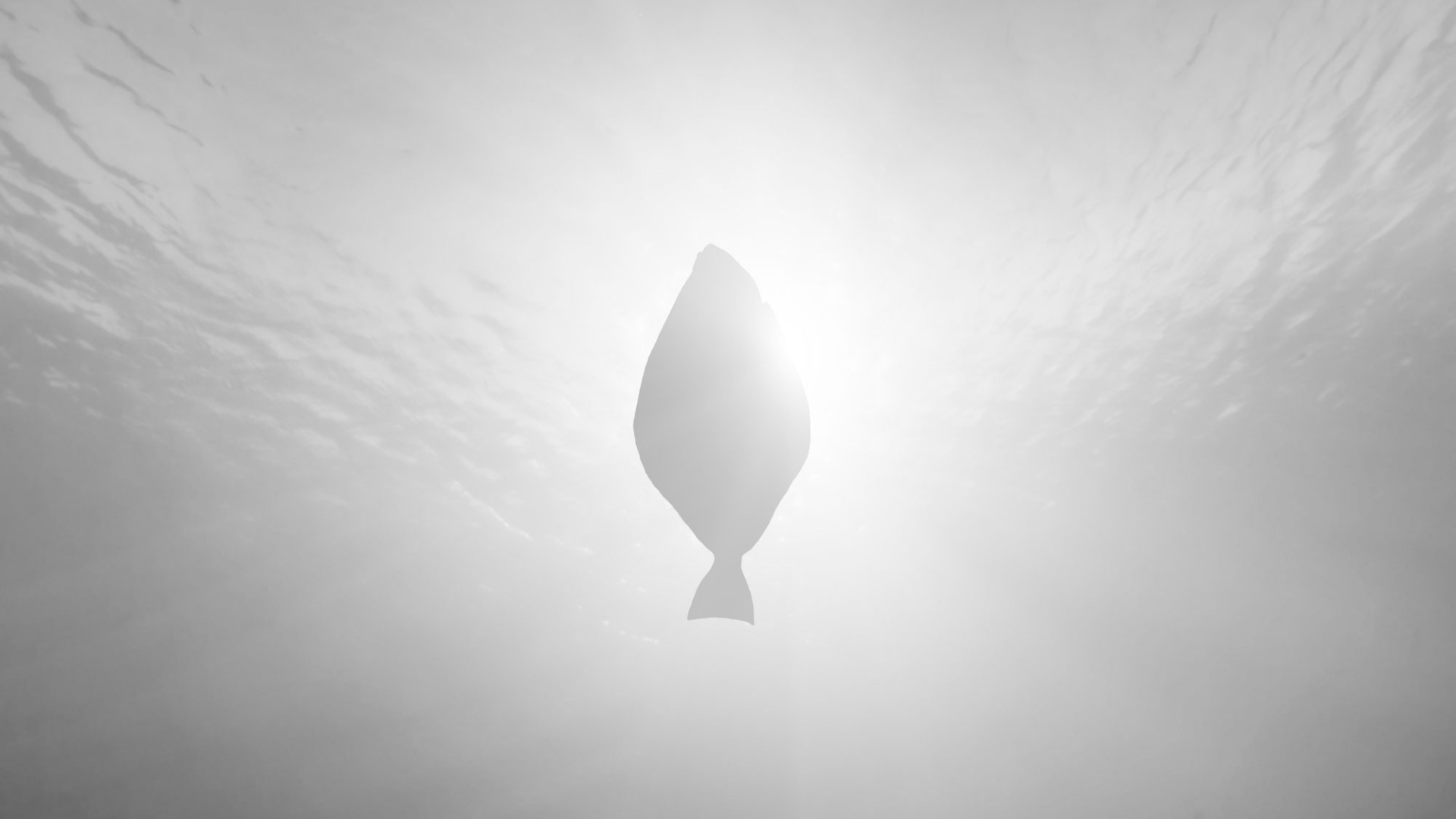
Shaped by nature
The halibut is a mystery. It thrives in deep water, but can suddenly decide that it wants to swim up to the surface and stay there for a while. Nobody really knows why.
The halibut is a flat osseous fish in the flounder family. Hippoglossus hippoglossus is the biggest species in the flounder family, and it can reach a size of more than 300 kilos and three and a half metres in length. The biggest documented halibut caught in Norwegian waters was caught in a net off Sørøya island in Finnmark county in 2007. It weighed 314.5 kilos and was three metres long. It must have been a female, because the male halibut rarely weighs more than 50 kilos. The year before, a German called Dieter Krüger caught a 105-kilo halibut in the Sognefjord. However, the smaller halibut are considered best for eating.
This flat fish has both eyes on the right side of its head. At the larvae stage, it looks just like any other fry, but a change, a metamorphosis, occurs when it develops into a fish. The left side becomes the underside and the right the topside, and the eyes migrate to the right side. The topside of the adult halibut can have different colours, varying from greenish brown to nut-coloured. The light underside distinguishes the species from the darker Greenland halibut.
In a way, the Sognefjord halibut reflects the nature it is part of, nature that has also metamorphosed over millions of years.
The mountain range into which glaciers and rivers have gouged out deep valleys, one of which became the Sognefjord, is among the oldest in the world. It was probably formed between 430 and 450 million years ago. It is part of the enormous Caledonian range that covers large parts of Svalbard, Scotland, Scandinavia and the east coast of the USA
Halibut has been an important commodity in Norway’s international trade, but it was not until the early twentieth century that the halibut fisheries really thrived. In 1928, 1,300 tonnes of halibut was caught on the fishing grounds near Bear Island alone, while a total of 2,500 tonnes was caught in the North Sea Basin as a whole. Marine scientist Finn Devold raised the alarm in 1937. The stock was in rapid decline following the introduction of extremely efficient halibut nets the year before.
The Atlantic Halibut was put on the International Union for Conservation of Nature’s (IUNC) Red List of Threatened Species in 1996, but for Norway it was moved from ‘near threatened’ to the category ‘least concern’ in the 2010 Norwegian Red List for Species. The Norwegian halibut stock is increasing. Fishing for halibut is regulated in Norwegian waters. The minimum size is 80 centimetres, and it is prohibited to fish for halibut using nets, trawls and seines during the spawning season.
Halibut are very attached to one location, and they often spawn in a very limited area. When the halibut gather in spawning sites, they are easy prey for fishermen who know their location. This know-how was, and still is, a secret passed down from father to son over the centuries.
The halibut is a predator that eats fish and other marine animals all the way down to about 2,000 metres. It likes deep water, but it will sometimes come up to the surface and stay there for long periods. Nobody really knows why. Perhaps it has something to do with the availability of food? There is a lot we don’t know about the halibut. However, a satellite tagging project carried out by the Institute of Marine Research shows that about half the halibut are quite attached to one location, while others migrate as far as 1,100 kilometres. It seems that the young individuals have more desire to travel, just like people.
One of the halibut in the Sogn region was caught on the north side of the fjord, transported across the fjord and released on the south side of the fjord. It was caught again two months later, on the north side of the fjord and in almost exactly the same place as the first time. Halibut also seem to think that home is best.